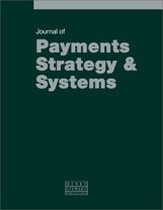Changing US consumer payment habits during the COVID-19 crisis
Abstract
Following the arrival of COVID-19, consumer spending patterns changed almost overnight, in some cases accelerating trends that had been progressing slowly for years, in particular, the transition of consumer payments from ‘traditional’ methods such as cash and cheques to electronic payment methods like cards, mobile wallets and mobile payment applications. As the world begins to transition into a post-pandemic economy, the big question is whether these new payment habits will endure. In an economy such as the USA, which produces nearly US$100tn of non-cash payments annually, changes to the way that consumption is conducted have potentially large effects on both cost and risk for financial institutions, payment networks and consumers. This paper uses data from the Federal Reserve Bank of Philadelphia to identify which segments of the population are most likely to maintain these new habits, and which are more likely to shift. While it is still too early to make definitive conclusions, this paper identifies trends that may provide insights into future developments in this area.
The full article is available to subscribers to the journal.
Author's Biography
Tom Akana is an adviser and research fellow with the Consumer Finance Institute at the Federal Reserve Bank of Philadelphia. His research focuses on consumer decision-making, payment cards and the impact of technology and regulation on consumer payment habits.
